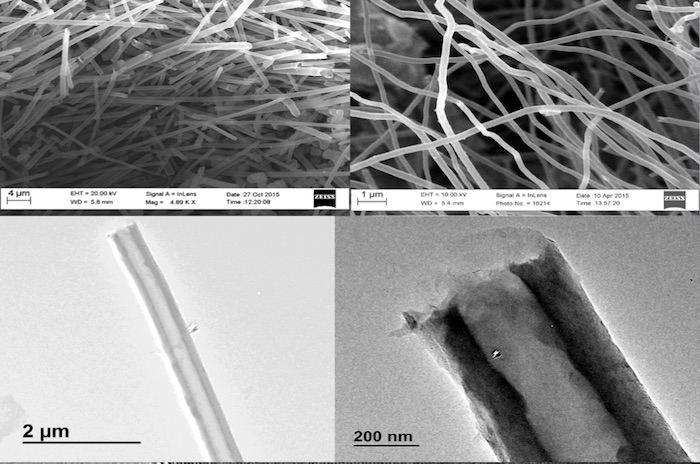MEDIA CONTACTS:
Maralee Csellar: csellar gwu [dot] edu, 202-994-6460
gwu [dot] edu, 202-994-6460
Timothy Pierce: tpie gwu [dot] edu, 202-994-5647
gwu [dot] edu, 202-994-5647
WASHINGTON (April 9, 2018)—Stuart Licht, a chemistry professor at the George Washington University, and his team of researchers are among the finalists announced today in the $20 million NRG COSIA Carbon XPRIZE competition. The team’s project C2CNT, which stands for, “carbon dioxide to carbon nanotubes,” is one of 10 finalists advancing to the final round in the NRG COSIA Carbon XPRIZE.
The C2CNT team uses low energy, low-cost technology developed in the Licht lab located at GW’s Virginia Science and Technology Campus to transform carbon dioxide into widely useful and highly valued products—carbon nanotubes. These lighter-weight alternatives to metals have remarkable properties including strength and conductivity and are now being used in airline bodies such as the Boeing Dreamliner, high-end sports cars, nanoelectronics and to store energy in electric vehicle batteries.
“Previously, there was not a cost-effective method for preventing greenhouse carbon dioxide emissions from the burning of fossil fuels, or eliminating other carbon dioxide causing global warming. We solved that problem by inexpensively transforming the carbon dioxide into a valuable product.” Dr. Licht said. “The product, carbon nanotubes, worth on the order of a quarter-million dollars per ton, should be viewed as valuable materials for companies to consider using in their products. We are already seeing that the market for such carbon composites is increasing similar to where the market for plastics was at the start of World War II.”
In addition to developing economically viable products that utilize carbon dioxide emissions from power plants, the NRG COSIA Carbon XPRIZE contest aims to scale up these technologies to a point that can truly impact climate change. The conversion of carbon dioxide to pure carbon nanotubes provides the most compact form to capture carbon dioxide and mitigate climate change.
“Scaling of our C2CNT process is progressing, and C2CNT operating with an area equivalent to less than 10 percent of the area of the Sahara Desert is sufficient to heal the atmosphere to preindustrial atmospheric carbon dioxide levels in 10 years,” Dr. Licht said.
The C2CNT process can utilize carbon dioxide captured directly from the air or from an industrial smokestack. The carbon dioxide dissolves easily into molten lithium carbonate. By adding electrodes and running an electrical current through the liquid, one electrode generates oxygen, and the other carbon nanotubes.
In the semifinal round of the contest, teams were judged on how much carbon dioxide they were able to consume, the size and value of the markets for their carbon dioxide-based products, and their efficiency in using energy, materials, land and water. For the final round of the competition, which runs until 2020, Dr. Licht and the C2CNT team will convert carbon dioxide emissions from a natural gas-fired power plant in Alberta, Canada for a chance at winning the grand prize.
-GW-


